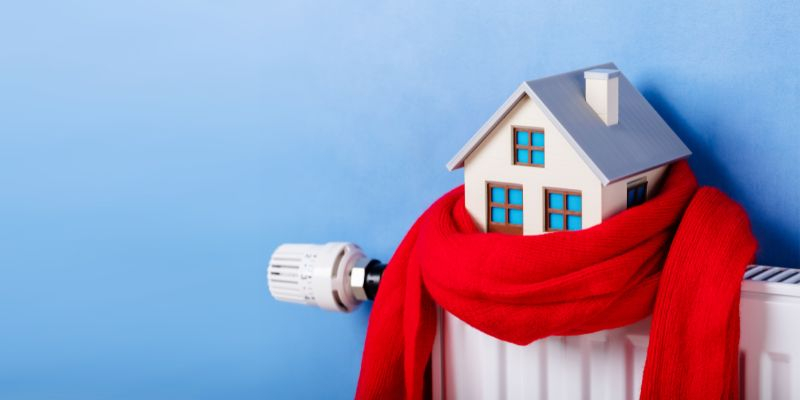Cheapest ways to heat your home
The cheapest way to heat your home is still gas central heating, even with the big price rises over the past year. But for many of us, the only option is to heat with electrical power and there are a wide range of options that are efficient and cost-effective.
There are also good alternatives to drying clothes with the tumble dryer.
It is easy to calculate the right power rating for your electric heater – it all depends on the size or volume of the room where it will be used. You should account for roughly 100 watts (or 0.1 kW) per m². First, you’ll need to calculate the size of the room by multiplying the length by the width of the room in metres. Next, multiply this number by 0.1 kW to find out how much power you need.
If you want to calculate based on the volume of the room you plan on heating, you will have to multiply the length and breadth of the room by its height before multiplying the result by 0.04 kW.
Choose a space heater with several heat settings so that it can be used in several different rooms. To heat up a bathroom quickly, go for an electric heater equipped with a fan. Electric heated towel rails occasionally offer this feature.
How to cut the cost of running an indoor heater
Radflek radiator reflector foil sheets are one easiest and most cost-effective ways to save energy in your home. The foil sheets reflect 95% of the wasted heat energy from the rear of your radiators back into your room. Radflek helps to lower your energy bills – you can get and keep your room to the desired temperature quicker by reflecting the heat that’s usually wasted
Designed to last and take with you if you move, each sheet has a coating to prevent oxidation and preserve reflectivity. Quick and easy to fit yourself, Radflek hangs from the wall brackets behind the radiator and is invisible once fitted.
Homemate Draught Buster Internal Door Draught Excluder is A simple and cost-effective way to save energy and money by reducing heat loss and preventing draughts in your home. Simply slide the excluder onto the bottom of any standard internal door, the Draught Buster easily adjust for any door plates and bumps in the floor. Unlike other draught excluders there’s no trip hazard!
With an EcoSavers Window Insulation Kit you can reduce heat loss through your single glazed windows by adding a layer of clear window insulation. Stopping cold air getting into your room through your windows means you’ll be turning up the thermostat less and saving money on your energy bills. Did you know 40% of your home’s energy escapes through your windows?
Fitting an Ecosavers Letterbox Brush Draught Excluder reduces draughts and heat loss, helping you save money on your energy bills. Did you know that 10% of your homes heat is lost through your letterbox? The letterbox brush simply attaches behind the inside opening of the door using four screws. It’s the easiest and cheapest way to stop annoying draughts coming in.
Self-adhesive Draught Seal for sliding doors and Windows is a cost-effective way to stop draughts and help lower heating bills as 40% of your home’s energy escapes through your windows. Brush pile strip for sliding doors and windows allows movement between the frame, whilst helping to keep draughts out.
Flexible Door and Window Insulation Tape is a flexible rubber draught strip tape that stops drafts coming under doors and through ill-fitting windows. The silicone seal has a strong adhesive backing that is long-lasting and easy Simply cut to size and fix to doors and windows.
Rubber Self-adhesive Draught Seal also prevents draughts and heat loss through windows, doors and loft hatches. It’s a simple and cost-effective way to help to cut your heating bills. The self-adhesive door and window foam strip is easy to fit, long-lasting with high recovery after compression.
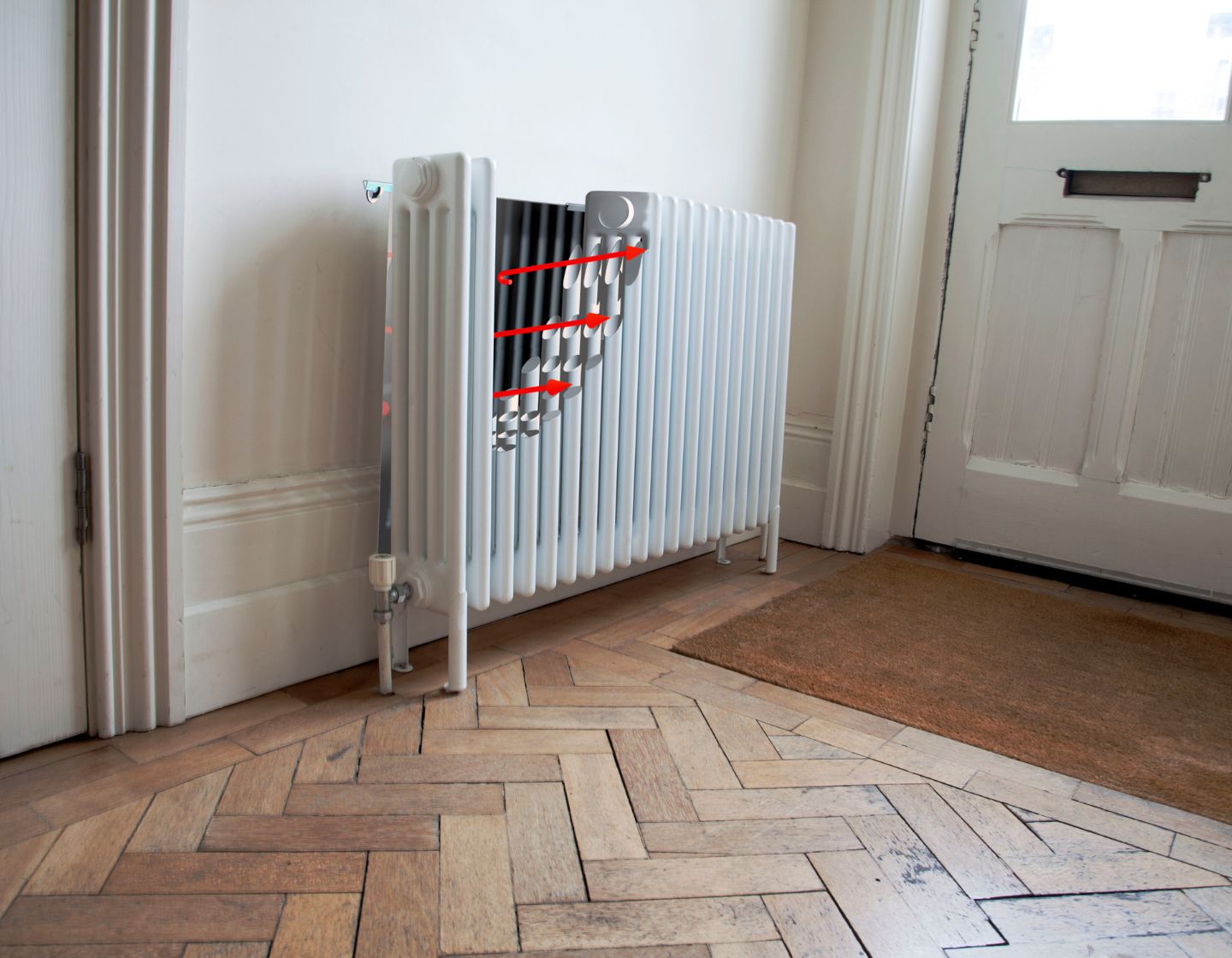
Far Infrared Heaters
Far Infrared Heaters are the most efficient of all the space heater options and consume the lowest wattage, making them the cheapest to run.
Far Infrared is radiant heating and is most easily absorbed by people’s skin. In fact, all objects, including us emit and absorb infrared.
Far Infrared heaters take advantage of the unique warming properties of this radiation. When the Far Infrared waves touch surfaces in a room, heat energy is released and so the ceiling, walls and floor of a room are gently heated.
That’s what we call “thermal mass” and because the room no longer is absorbing our body heat, we feel warm. In fact, we are built to respond to this form of heat as it is what we feel when we are in front of an open fire or feeling the sun on our faces.
You feel the heat instantly, and the whole room gently heats up and stays warm over time. We absorb Far Infrared radiation exceptionally well, because our bodies are 80% water and the long wave form acts very effectively on this.
If you compare that with conventional heating, there is a world of difference. The convection process that central heating systems use, for example, is geared to warming the air, which is far less effective in transferring thermal energy to a building.
Far Infrared heaters come in a wide range of options, wall panel, freestanding, ceiling, even as a mirror or work of art. A cold draft won’t ruin the heat.
Drafts won’t affect temperatures as objects keep the heat, unlike convection heating that warms the air. You can also control the heaters individually so you don’t need to heat unused areas.
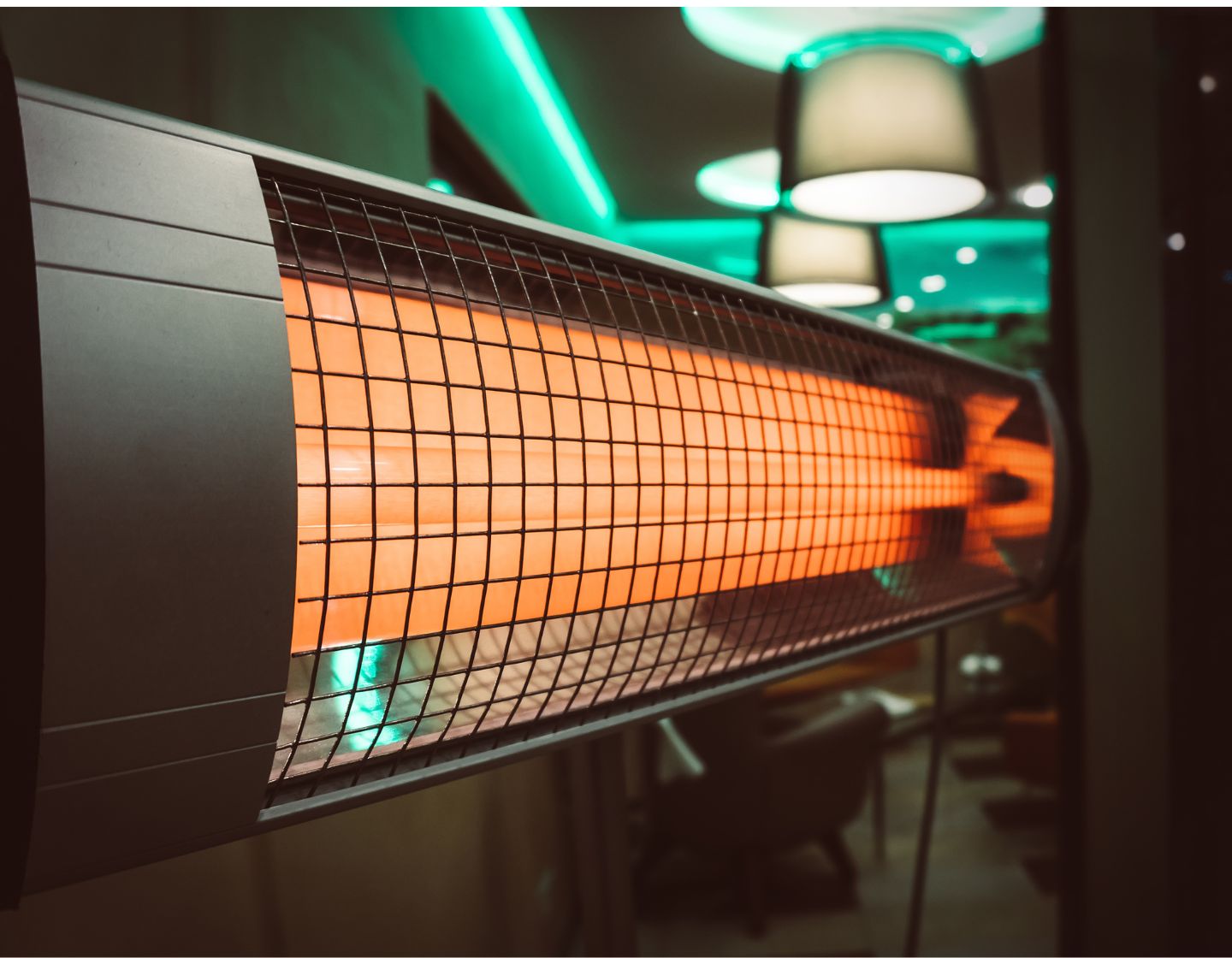
Conventional heaters
For conventional heaters it’s important to ensure that the area you are heating is well insulated and make sure that there are no drafts which can suck out the hot air, particularly near windows and doors. Make sure you place your heater in the best spot in a room and try to avoid big objects being place directly in front.
When turning on the heater, the most efficient method is to go blast to heat up quickly, then maintain the temperature using a low settings, which reduces overall electricity consumption. By using digital timers, you can make sure the room is warm when you get home. You can opt to turn off the heat after you go to bed.
Space heaters is powered by electricity and can be plugged into any standard outlet, so can be additional to central heating or used a primary heating source. The designs and sizes vary, as does the heat emitted,
Ceramic Heaters
Ceramic Heaters are quite efficient and also have the cheapest up-front cost. First the ceramic heating element is heated using electricity, and this then heats up the surrounding air. Some also have a fan which helps to moves the heated air around. The cost of running them depends entirely on their wattage and how you use them.
While they’re not the most efficient, they are easy to buy and use – and they’re easy to move around. Because ceramic is very durable the heater should operate for many years without breaking down, as long as you keep it clean and free of dust.
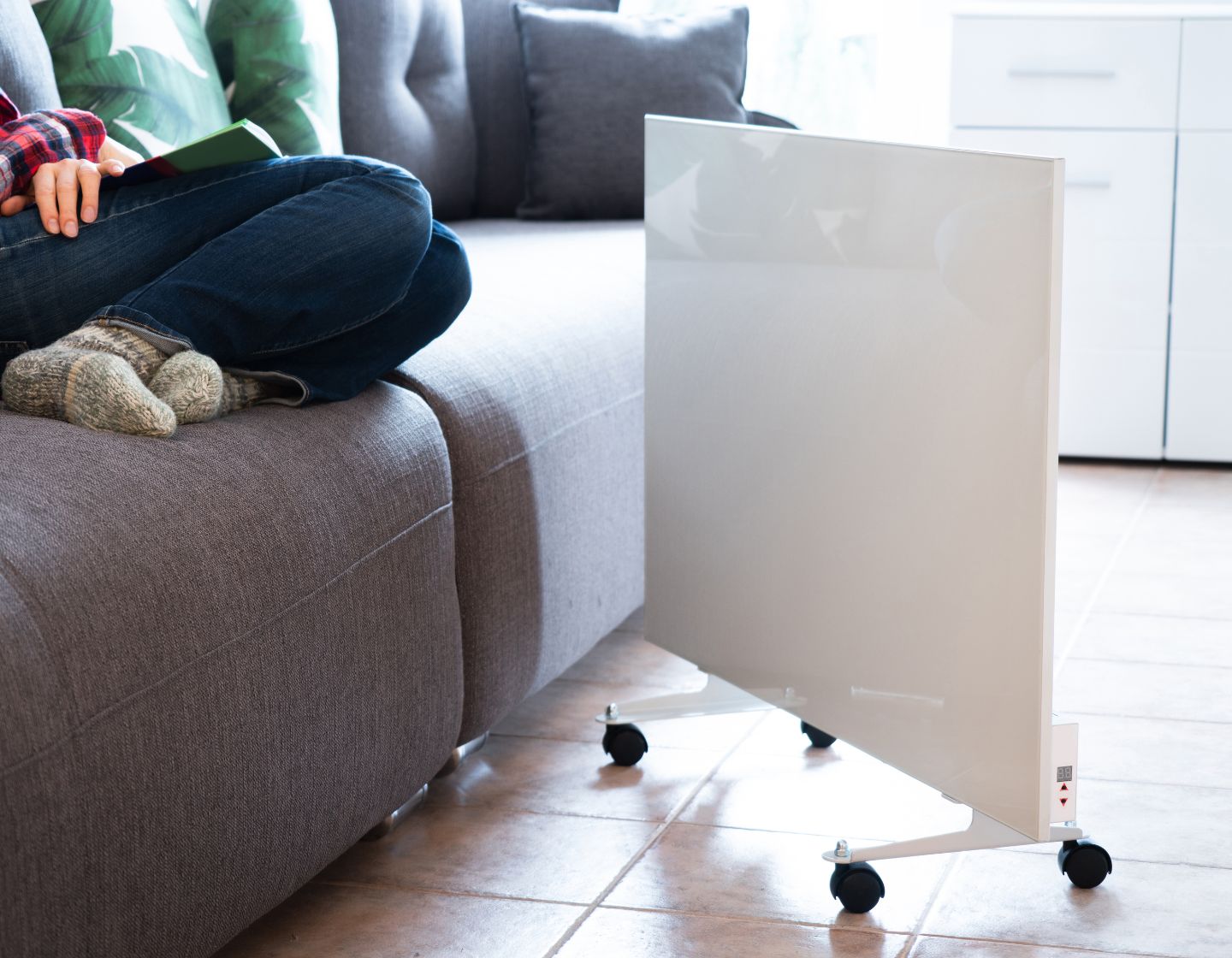
Oil-Filled Heaters
Oil-filled radiators use an electrical element to heat a reservoir of thermal oil inside the appliance. The electrical element is submerged within the oil, so that when it heats up, the warmth created is transferred to the surrounding liquid. As the oil is not burned, there’s no need to top up or replace it
Modern oil heaters are super-efficient and keep their heat for a very long time but take a while to heat up, so it’s worth choosing one with a digital timer so it switches on before you get home. Some models have built-in fan heaters which means having immediate heat while the radiator warms up, then switching to the radiator when fully warmed up.
The upfront cost is the most expensive of the portable heaters but they’re good value as they retain heat most effectively, and so use less electricity.
They are near silent in operation and most models are freestanding although some can be wall-mounted. Like the other heaters, they can feature thermostatic control, overheat cut-out safety functions and timers.
Fan Heaters
Fan heaters blow air through a heated element and then disperse the warmed air into the room. this The most common type of fan heater uses a metal element to generate heat and offers the quickest way to heat a small space. They’re easy to use and move around.
Convector Heaters
With these models, heat is generated through an electric element, with the warmed air rising and moving into the room. The more powerful the heater, the wider the circulation of the warmed air.
Convector heaters warm up quickly, are very quiet and most are freestanding although some larger models can be wall-mounted for a long-term solution. They’re light and easy to move around, and some have thermostatic control and timers. Some models have an integrated fan that helps disperse the heat more quickly.
Panel Heaters
Panel Heaters are designed purely to heat the air in any room. Hot metal elements inside the heater body warm the air and a convection heating cycle causes this warm air to rise and cool air to sink before reheating again and circulating around the room. Generally panel heaters sao are better suited to rooms which need warming less often than a living room.
Storage Heaters
Storage heaters are more expensive to buy but can be cheap to run, by using off-peak electricity tariffs. They store up heat energy in thermal bricks, using cheaper electricity at night, and then release the heat when needed during the day.
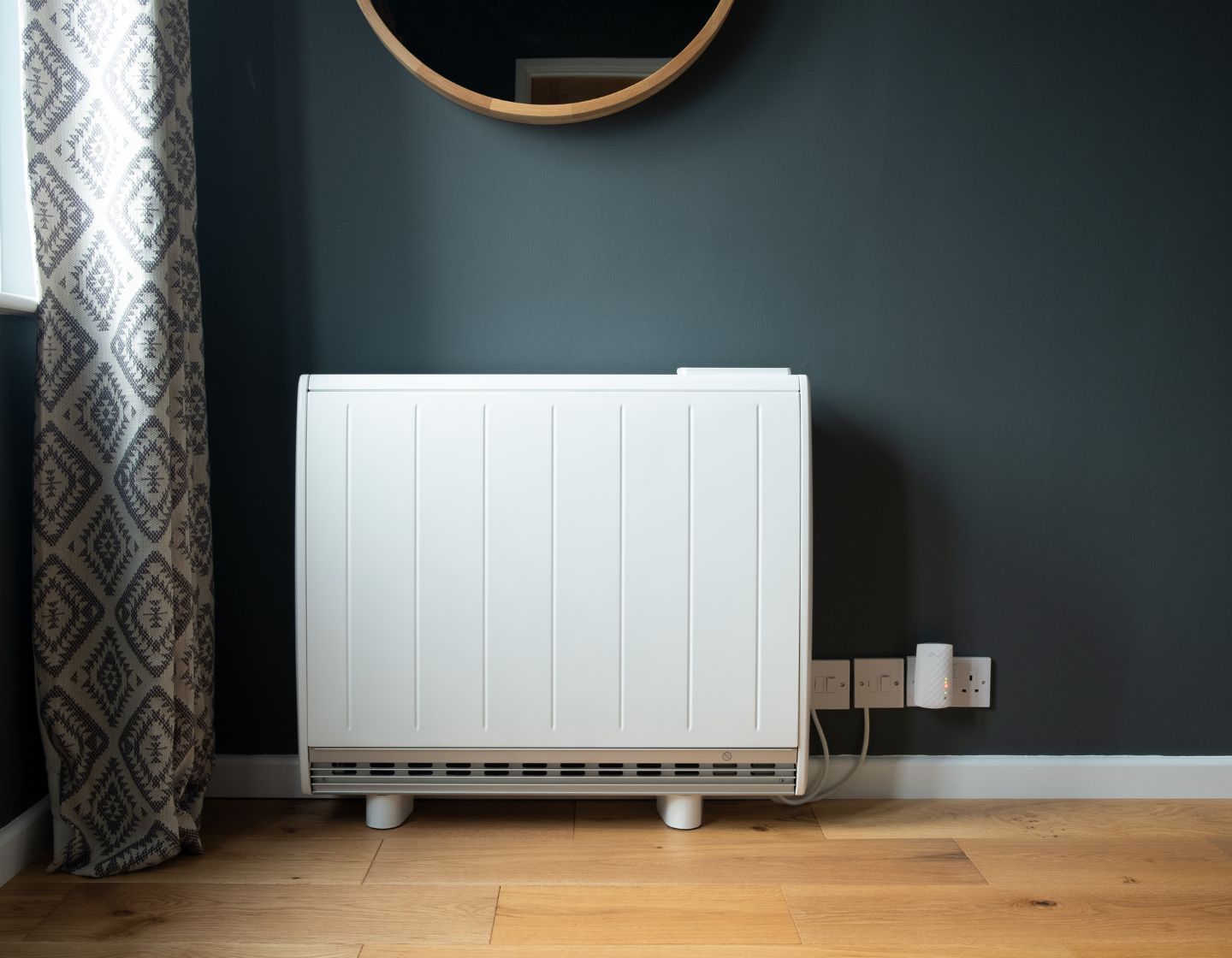
Space Heaters
Standard space heaters are popular because of their cheap up-front cost. They have a heating element that use fans to move hot air around the room, but they can be expensive to run, great for fast heating but you lose heat rapidly through any cold drafts or open doors.
A space heater can take less than an hour to fully warm a room and a well-insulated space with no draughts should mean you can maintain the temperature with a lower power setting.
Heated clothes airers
Compared to the cost of running a tumble dryer, the best heated clothes dryers can be cheaper as they use far less power, but they do take much longer to dry clothes. Depending on the type of materials, a heated dryer could take anywhere from 2-3 hours to over 8 hours to dry the clothes fully.
That is much longer than a good tumble dryer, which is made even more efficient with an ecoegg dryer egg The dryer eggs help to separate the laundry so that more air can circulate, drying each item more quickly. The nodules on the eggs are designed to help soften clothes naturally so there is no need to use fabric softener.
If the tumble dryer option is not available for you, then a well-made and robust heated airer would be a good investment. But make sure you choose a quality model that is built to last.
They look similar to a standard clothes airer and plug into a wall socket, using electricity to warm up the airer. Most are foldable and can be stored in a cupboard or behind furniture. Some come with a cover to use to speed up drying time even more.

